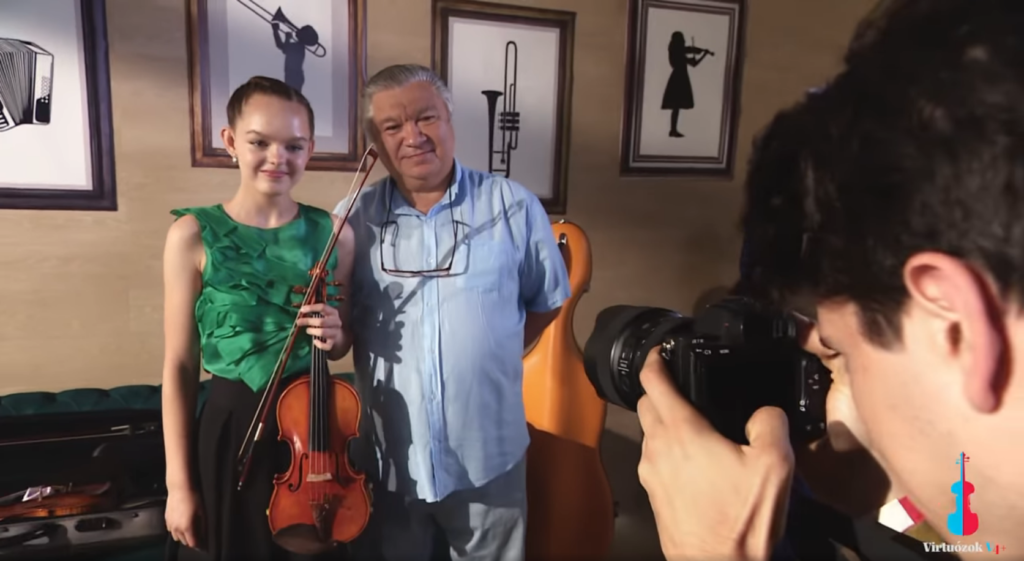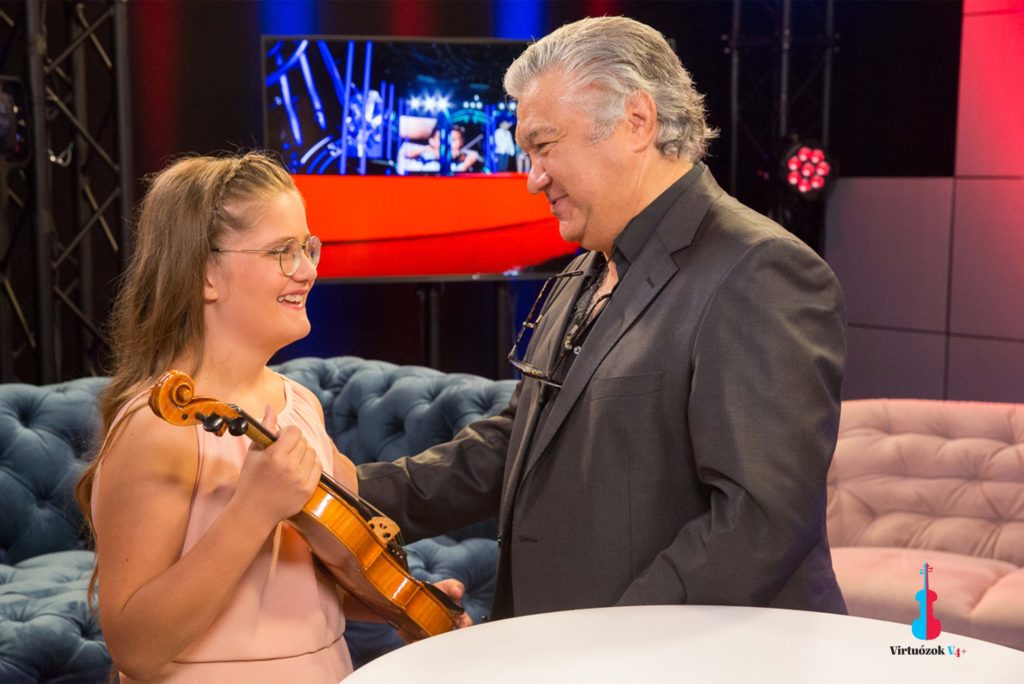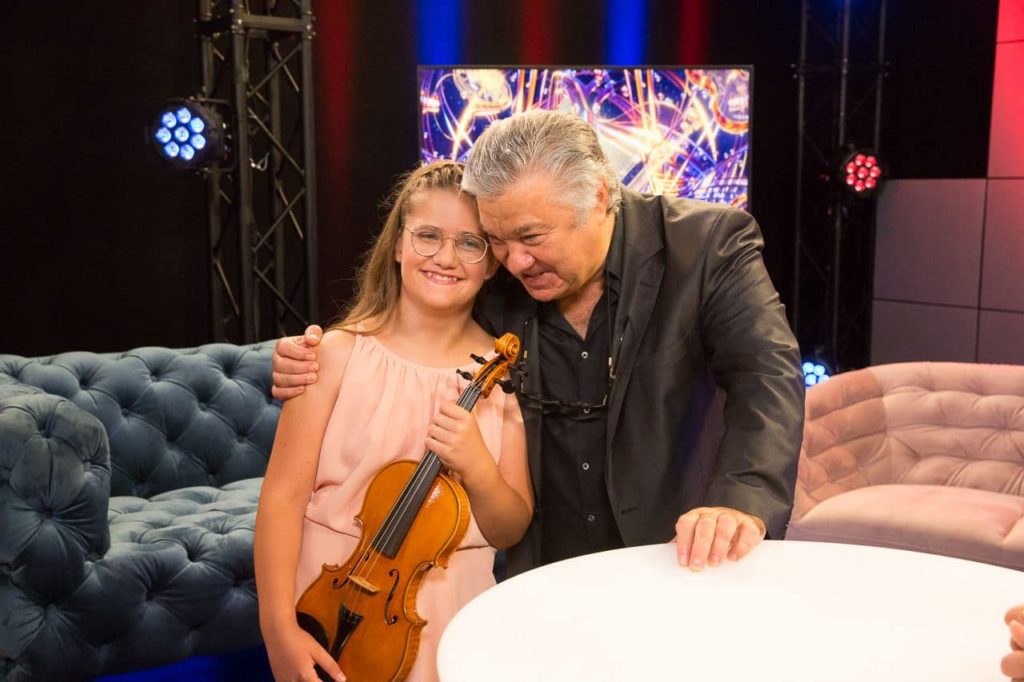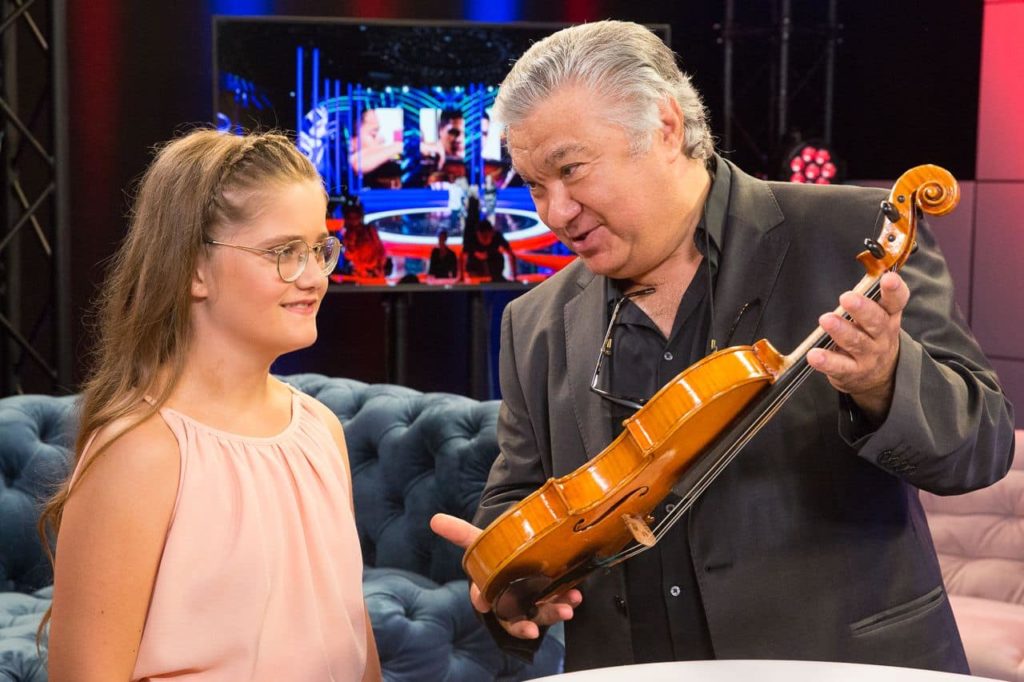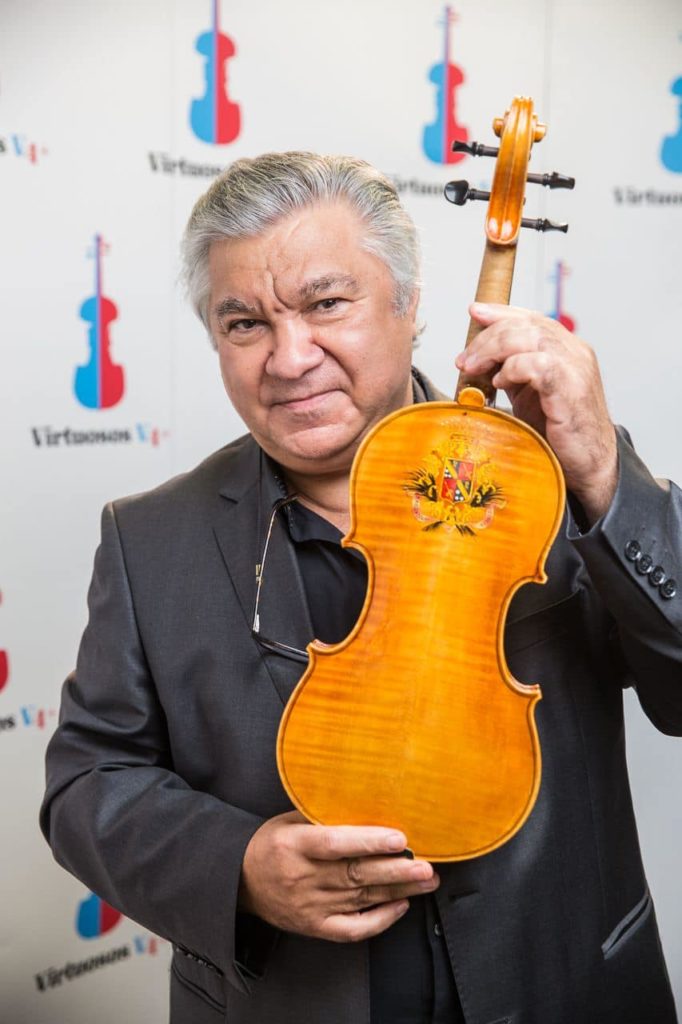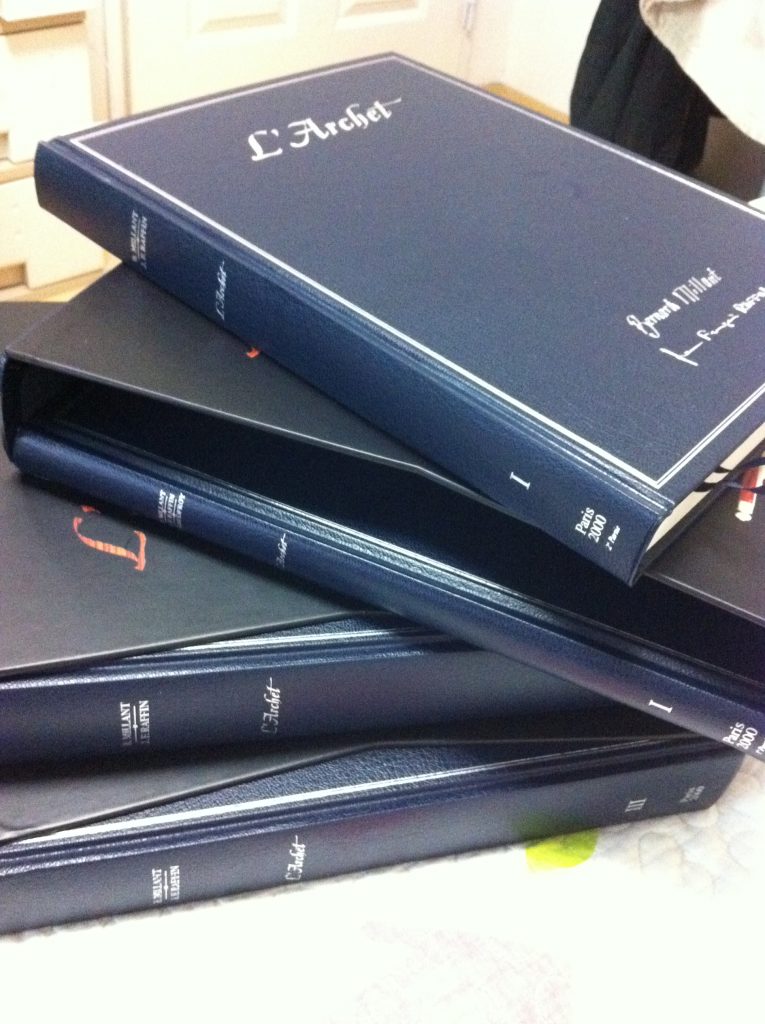Fiftheen thousand bows was made before it based on a true story and was written down in a book Bernard Milliant visited Budapest by accepted an invitation of Racz Pal, a famous Hungarian violin maker who says the French master is one of the best individual in the whole planet who ever made violins. Milliant, who has served on the jury for many international competition, brought his 3-volume book The Bow, to Budapest.
Milliant believes in that a bow made by just 2 days, but finishing one takes about one or two weeks.
„I was born in a violin maker family where our root has been dated back to the 18th century. Unfortunately, I am the last carrier for this tradition in my family, because I have no child, but Loic Le Canu, who is responsible for my book`s photography, takes over our family trade as my adopted son- says Bernard Milliant, who is trusted and respected as the Father of the violin bow by the most of the string instruments musicians around the world.
I had spent 3 years in Mirecourt, in a little French town, what called as the cradle of violin making. Half of the string istrument makers, and 90 percent of violin bow makers linked to this town. Mirecourt looks like Cremona in Italy, and it could be compareable by significance – the Master tells, and furthermore he says the beginning for him was extremely hard.
Music after the Second World War, has not been that important as before. People may have forgotten it, as they have closed piano fallboards, and music had been falling down that has emerged from the development of tehcnology as televisions, or cars gain ground, so people have not paid attention to the music, musicians or instruments. He had to face with a problem at the time, if he continued his violin making work, as his father was done, he could be broke, so Millant has decided to repair instruments instead.
„One day I left an eye on some old Pernambuco wood in one of my customer`s house, and I bought it. I was so happy, because I have learnt how to make violin bows, in Mirecourt, and I knew that exactly, for the best outcome in a bow making, some 40-50 year old Pernambuco wood needed. I have finished my first bow, what was not a masterpiece, but it was sold. I had worked as a repair man, but continously I have been making bows, and slowly but surely I reached some famous music artists with my special skills.” – Millant says about the beginning.
„A violin can be used by everybody, but the bow is just for personal use. The sound of a violin always comes up as a 3-party celebration, the roles are taken by the musician, and the violin, but the bow is so important, actually without it both above cannot be complete. Before the 18th century musicians had looked up at the violin bow as an accessory, but these days the bow plays the most important part in the quality of the sound of a violin.” – narrate the story how Millant became a bow maker genius. As he told: „If we search for a violin, we take a good look at it, which size we look for, how much we want to spend on it, and what kind of types we would buy. A bow is taken in a different kind: if a person needs one who plays in a music band, he takes a strong one, because he plays in a group as a part of it. If you are a solo artist, who is alone on stage, you use a more sensitive bow: oxidation process is particularly important. You need a flexible bow, that you can control easily. You also have to notice that when you play composition from Mozart, Bach or Dvořak, you need a completely another one. If we compare this situation to competition horses, I would say a violinist in a music group needs a reliable, great horse, while a solo artist needs a passionate racing horse.”
There should be a deeply trustful relationship between the luthier and his customers. “In many cases it is not only about the required instruments, but we’re also a little bit soul healers, whose task is also to add some sense of security to the musician before the concert” – he says.
According to Milland`s preparing practice a bow takes about two days, then take a week or two to adjust. The situation of a new piece made by wood is completely different, as yet it does not keep its shape.
An artist usually uses a bow or two, as long as he takes a good care of it, and properly replaces the bow hairs: a member of a band usually replaces the bow hairs twice a year, a solo artist does it every month. But what makes a good bow? According to Bernard Milland the Pernambuco wood, a hard wood species from Brazil, by virtue of its density does not float on top of the water. According to Milland in making violins Stradivari and Guarneri are legends, in making bows the King is a beginning of the 1800s Paris born, French master Francois Xavier Tourte. “He created the modern bow, which is different from the type that used in Baroque music, because that is not convex, it is concave instead. His oeuvre is due to the fact that for a long time there was not a soloist, who had not played with a French bow. These days, of course, this is changing, as anyone can travel to France and learn the art of bow making “- Milliant to intervene in the history of bow making.
However Milliant considers that the particular importance of the profession has not harmed the profession by the “internationalization”, the instrument makers still a form of a large family. “Every two years there is an international congress, which is held in Stockholm in May next year. This cooperation is stopping us doing something wrong to each other`s business, and it makes us to appreciate the work of each others.”
In 2010, the Master wrote his great comprehensive work, The Bow (L’Archet).
Jean Francois Raffin participated in the book, who learned the profession of bow making as Milliant`s assistant and now he`s pursuing the success in his own store. In the preparation of the book Historian Bernard Gaudfroy also participated.
I gave my business over to my adopted son recently, and in the series of the three-volume book I collected all the French bow maker Masters. I put five and a half years of my work into this one thousand five hundred pages and four thousand five hundred photos. I chose those bows that were published in my book from fifteen thousands. Since then the book has been public, I have discovered three or four additional Masters, but this work will be continued on the next generation in charge “- says Bernard Milland .
